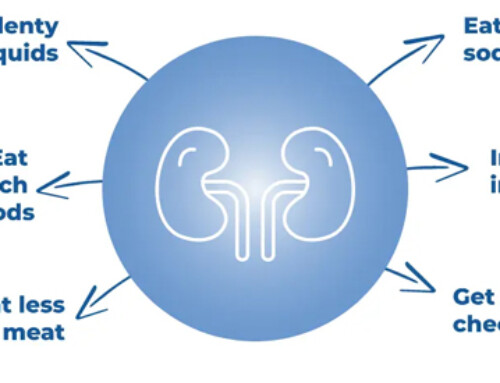Table of Contents
Two parts of trusting your gut:
- If something doesn’t make sense it probably isn’t right. Take a step back and look again.
- Don’t go along with something you don’t believe.
What is the FeNa?
The FeNa is the percent of sodium filtered by the kidneys (glomeruli) that is excreted in the urine.
What is a normal FeNa? Let’s think about it.
The amount of sodium excreted in the urine is the amount ingested in the diet. What comes in has to come out (if your body is functioning normally).
How much sodium is excreted in the urine? Let’s say you eat 4 grams of sodium a day. The amount of sodium excreted will be:
4,000 mg x 23 (molecular weight of sodium) = 92,000 meq per day.
How much sodium is filtered by the kidneys (glomeruli)? Let’s say your kidneys are normal. A normal kidney filters 125 milliliters of blood per minute (ml/min). This is the glomerular filtration rate (GFR). The normal concentration of sodium in the blood is 140 milliequivalents per liter (meq/L)
140 meq/L x 125 ml/ min = 17,500 meq per minute x 1440 minutes in a day = 25,200,000 meq per day.
So if your kidneys are normal and you eat a normal amount of salt your FeNa is
92,000 / 25,200,00 = 0.36%
A normal FeNa is < 1%
How to Calculate the FeNa
You can use a calculator to figure it out. There’s an app for that:
Fractional Excretion of Sodium (FENa) – MDCalc
Calculators are a great tool. You should also understand the calculation. That way if something doesn’t make sense you know how to verify the calculation. The first part of trusting your gut.
Urine Sodium (UNa) x Serum (plasma) Creatinine (SCr)
FeNa = X 100
Serum (plasma) Sodium (SNa) x Urine Creatinine (UCr)
This is too hard for me to remember. I can look it up, but what I can remember is this:
U over P, Sodium over Creatinine
Urine Sodium
Plasma Sodium
Urine Creatinine
Plasma Creatinine
What does the FeNa tell us?
What’s the point of this information?
The FeNa is a way to assess if the kidney tubules are functioning. As seen in the above illustration most of the sodium that is filtered by the glomerulus is reabsorbed by the tubules and doesn’t end up being excreted in the urine.
The FeNa is intended as a way to assess function of the tubules in patients who are oliguric
If you’re hypovolemic and the tubules are working they should be reabsorbing more sodium
Prerenal – FeNa < 1%
If the tubules aren’t working then they won’t be able to reabsorb more sodium.
Acute Tubular Necrosis (ATN) – FeNa > 1-2%
How the FeNa can mislead you. Trust your gut
The FeNa is complementary data. It shouldn’t trump your clinical impression. History and physical are always the most important. If the FeNa doesn’t jive with your clinical impression then:
- Do the calculation yourself
- Think there may be another reason to explain the Fena.
Reasons why Prerenal patient may not have low FeNa:
- Diuretics
- Gastric losses (vomiting NG suction)
- Chronic Kidney Disease (CKD) where the baseline FeNa is high
Diuretics: This one makes sense. Someone who is overdiuresed may be prerenal. The diuretics increase the amount of sodium excreted.
Some other options to support your clinical impression:
- Hold diuretics and recheck FeNa
- Check the fractional excretion of urea
Gastric Losses: Vomiting or nasogastric suctioning. These patients may be prerenal from fluid loss. Gastric secretions contain hydrochloric acid, HCl losses can result in a metabolic alkalosis. As bicarbonate is an anion, subsequent bicarbonate losses in the urine obligate the loss of a cation (like sodium).
For this reason when evaluating a metabolic alkalosis:
- Check the Urine Chloride
CKD: The above illustration shows the “normal” GFR with normal kidney function. What is a “normal” GFR in chronic kidney disease? Let’s say the GFR is 30 (on the border of CKD stages III and IV) in someone with 4 grams of sodium in their diet.
4,000 mg x 23 (molecular weight of sodium) = 92,000 meq per day.
140 meq/L x 30 ml/ min = 4,200 meq per minute x 1440 minutes in a day = 6,048,000 meq per day.
This patient’s baseline FeNa is 1.52%. Even if it decreases from this baseline (because the patient is prerenal) it may remain above 1%.
Reasons why a patient with a low FeNa may not be Prerenal
- Contrast (vasoconstriction of afferent arterial)
- Rhabdomyolysis
- Acute Glomerulonephritis
- Hepatorenal syndrome.
Contrast Nephropathy: Radiocontrast may cause constriction of the afferent arterial. For this reason the urine sodium and FeNa may be low.
Myoglobinuria or Hemoglobinuria: May cause a low FeNa by the same mechanism of contrast.
Acute Glomerulonephritis: In the studies of oliguric AKI. Acute GN was associated with a low FeNa.
See this article: https://www.nejm.org/doi/full/10.1056/nejm199605303342207
Hepatorenal Syndrome: At times it may be difficult to differentiate hepatorenal syndrome from Prerenal AKI. A very low FeNa < 0.1% suggests hepatorenal syndrome. Epidemiology, Pathophysiology, and Management of Hepatorenal Syndrome – Seminars in Nephrology
Summary
The Fractional Excretion of Sodium is a way to assess tubular function in oliguric acute kidney injury, therefore helping to distinguish prerenal AKI from Acute Tubular Necrosis. It should be used as complementary information in this assessment. Understand the reasons why a prerenal patient may not have a FeNa < 1% and a FeNa of < 1% may occur in other causes of AKI.



